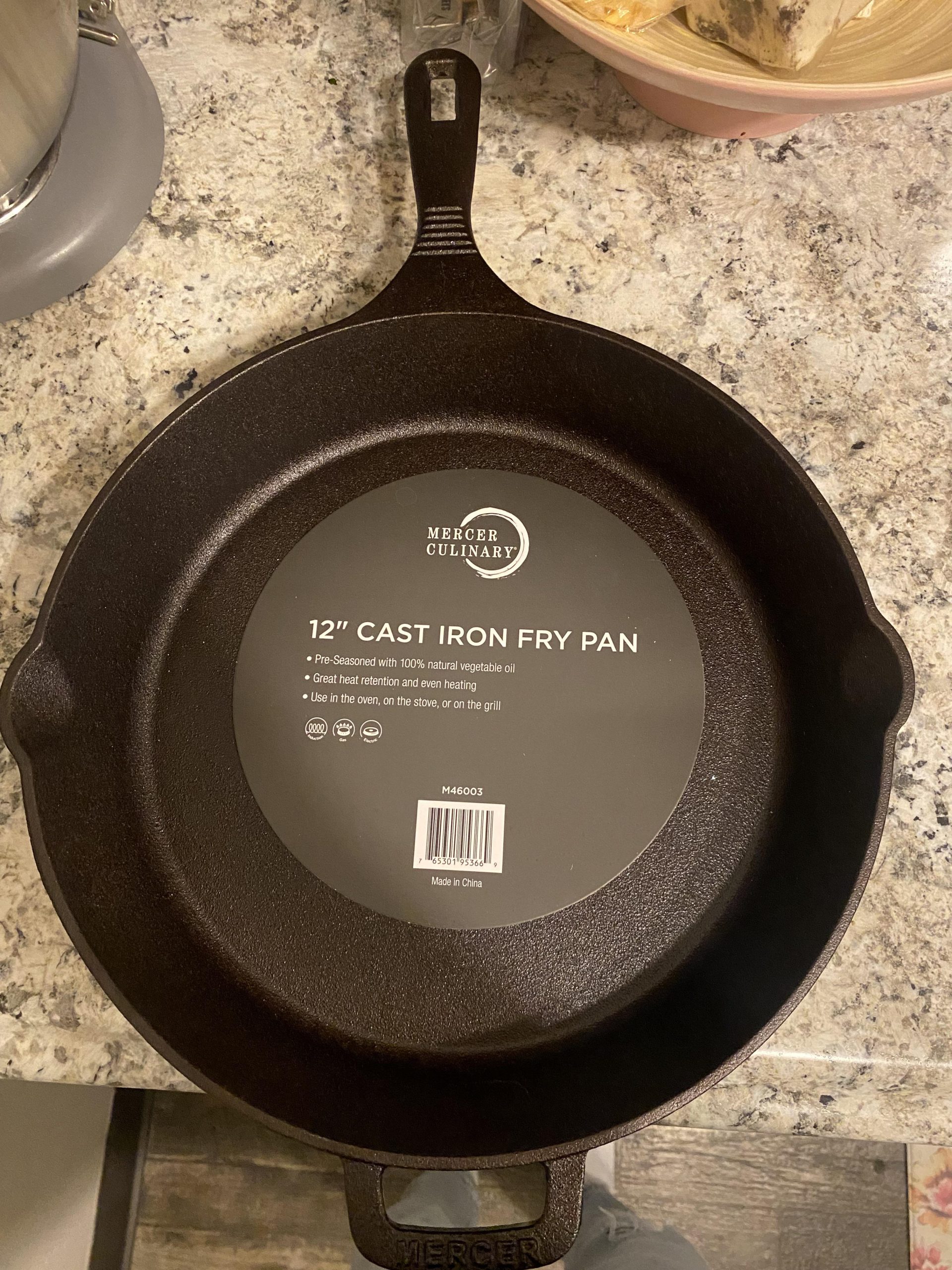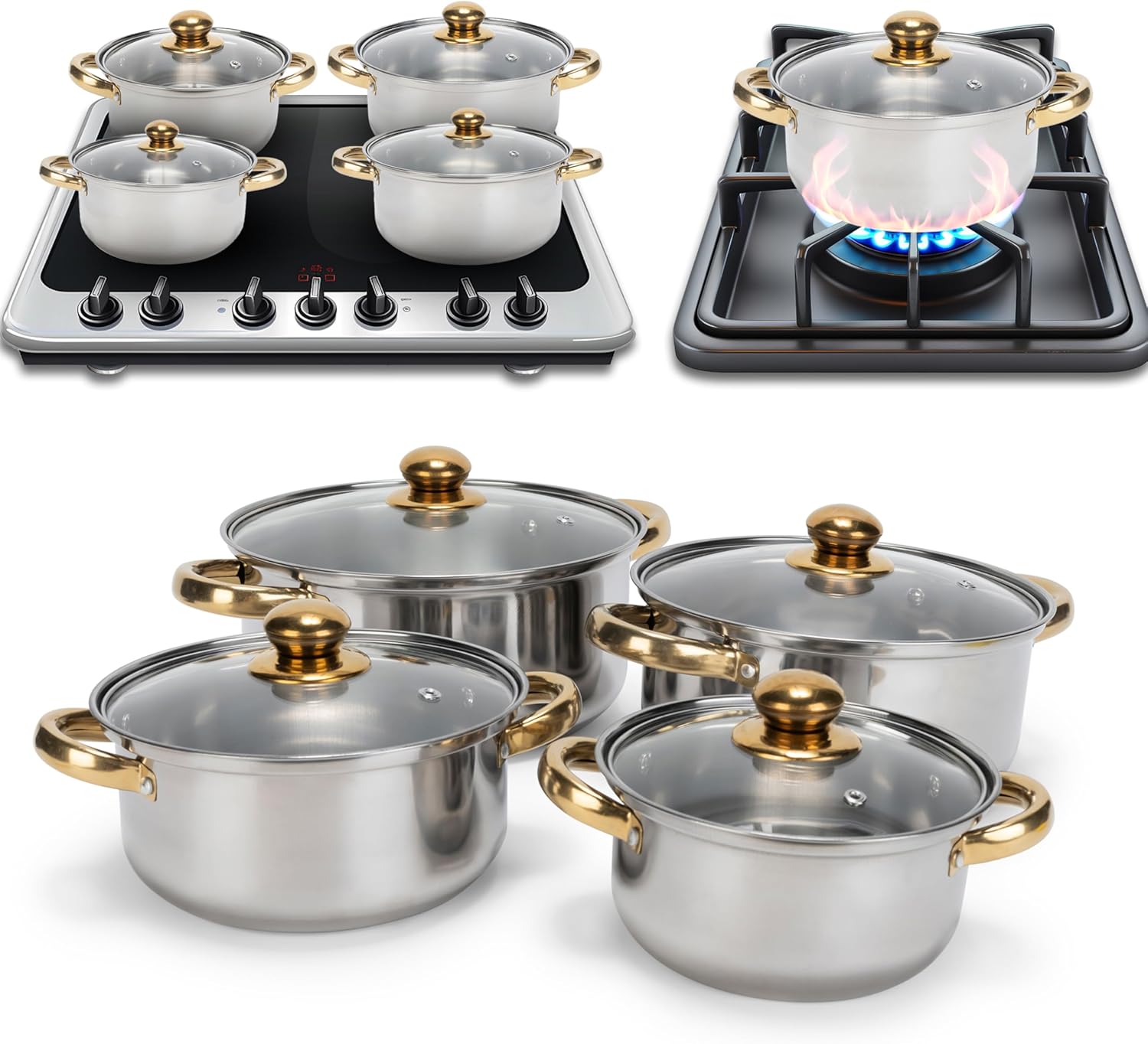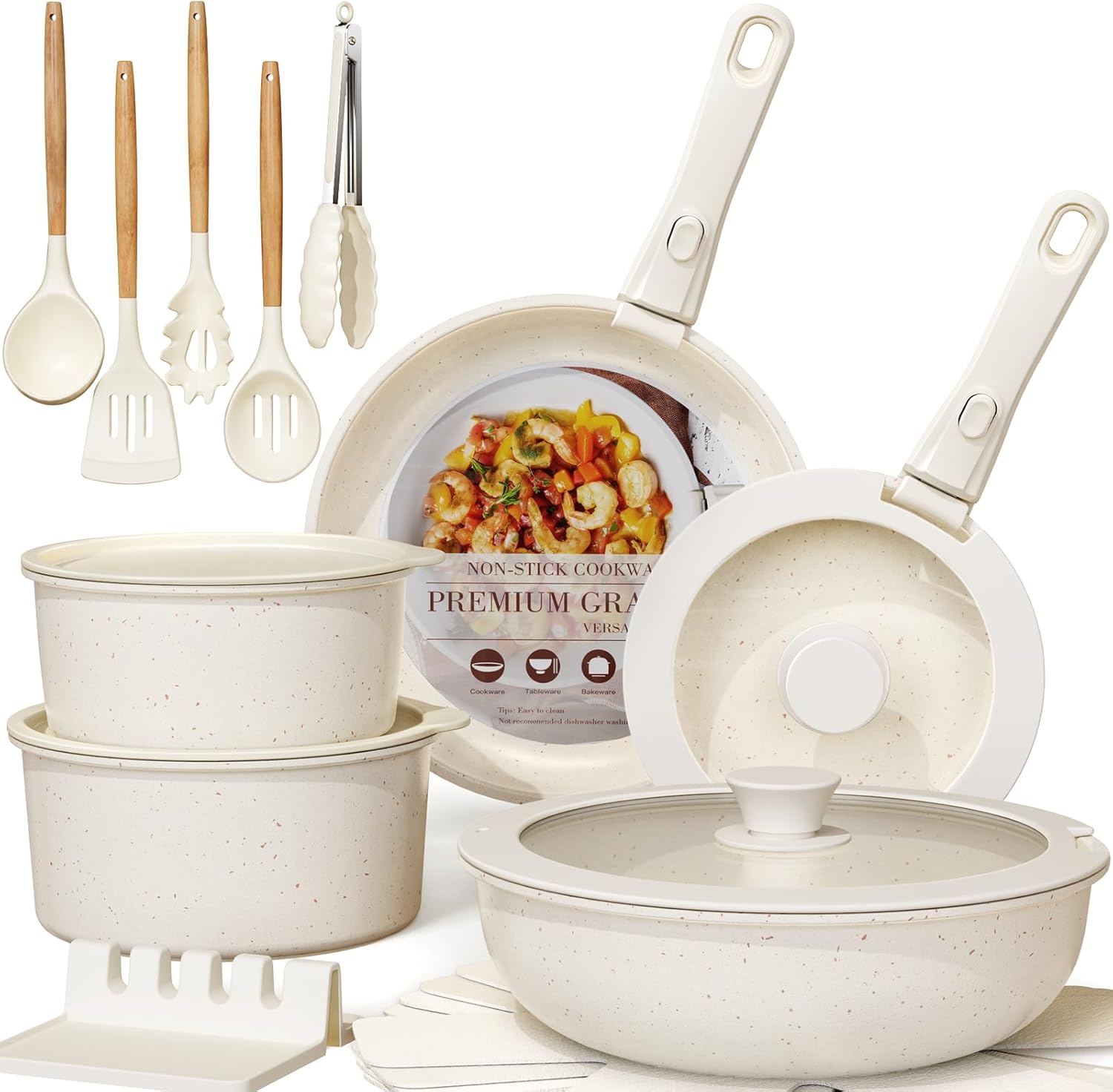Before using a new pan, wash it with soap and water, and then season it if necessary. Ensure it’s thoroughly dried to prevent rust.
What to Do Before Using a New Pan:Bringing home a new pan is exciting for anyone who loves to cook. It’s essential, however, to prepare it properly before its first use. This initial step not only cleans any manufacturing residues but also sets the stage for better cooking performance.
Seasoning, a process particularly vital for cast iron and carbon steel pans, involves coating with oil and heating to create a non-stick surface. For other materials like non-stick or stainless steel, a simple wash is sufficient. Remember, the care you give your pan before its culinary debut can extend its life and enhance your cooking experience. Each type of pan has its specifics, and knowing them ensures your kitchen adventures start off on the right foot.

Credit: www.reddit.com
Choosing The Right Pan
Welcome to the essential guide on ‘Choosing the Right Pan‘. The perfect pan can elevate your cooking from good to great. Let’s ensure you select the best one.
Material Matters
Material is crucial for pan performance. Each type offers unique benefits.
- Stainless steel – Durable, versatile, ideal for searing.
- Cast iron – Retains heat, perfect for frying and baking.
- Non-stick – Easy food release, requires less oil.
- Copper – Excellent heat conductivity, for precise cooking.
- Aluminum – Lightweight, heats quickly, budget-friendly.
Size And Shape Considerations
Selecting the right size and shape is vital for cooking success.
| Pan Type | Size | Shape |
|---|---|---|
| Frying Pan | 8-12 inches | Round, sloped sides |
| Sauce Pan | 1-4 quarts | Round, tall sides |
| Stock Pot | 6-12 quarts | Round, deep, straight sides |
| Grill Pan | 10-12 inches | Square, ridged bottom |
Consider your cooking needs. Match pan size and shape to the dishes you prepare most often. A well-chosen pan makes cooking easier and more enjoyable.
Unboxing And Initial Cleaning
Welcome to your new pan’s first adventure! Getting it ready is easy. Follow these steps for the best start.
Removing Labels And Packaging
Take off all stickers and tags from your new pan. Peel them slowly to avoid residue.
If sticky bits remain, use a mild solvent like rubbing alcohol. Apply it to a cloth and wipe clean.
After removing the labels, recycle the packaging materials if possible. It’s good for the Earth!
The First Wash
Now, clean your pan before its first use. This removes any dust or manufacturing residues.
- Fill the sink with warm, soapy water.
- Use a soft sponge to gently scrub the pan.
- Rinse with clean water to remove soap.
- Dry it with a soft towel or let it air dry.
Your pan is now ready! Enjoy cooking delicious meals.
Seasoning Your Pan
Before you cook with a new pan, seasoning it is key. This crucial step ensures your food cooks evenly and doesn’t stick. Let’s dive into why seasoning your pan is important and how you can do it right.
Why Seasoning Is Crucial
Seasoning creates a non-stick surface. It also protects the pan from rust. Your food will taste better, too. Without seasoning, pans wear out faster. Proper seasoning means longer life for your cookware.
Step-by-step Seasoning Guide
Follow these steps to season your pan:
- Wash the pan with soap and water.
- Dry it completely with a towel.
- Preheat your oven to 300-350°F (150-175°C).
- Apply a thin layer of oil to the pan. Use an oil with a high smoke point.
- Place the pan in the oven for about 60 minutes.
- After heating, let it cool in the oven.
- Remove the pan and wipe away any excess oil.

Credit: m.youtube.com
Testing For Hot Spots
Before cooking with a new pan, it’s crucial to test for hot spots. Uneven heat distribution can lead to poorly cooked meals. Discover how to check and address hot spots with simple steps.
The Water Droplet Test
Perform this test to find hot spots. Heat your pan and sprinkle water on it. Watch how the droplets behave. If they evaporate quickly, that spot is hotter. Look for areas where water droplets last longer. These are cooler spots.
How To Identify And Deal With Hot Spots
Identifying hot spots is key to even cooking. Use the water droplet test to find them. Once you know where they are, you can manage your cooking technique. Move food around the pan to ensure even cooking. Avoid placing food only on hot spots.
- Heat pan on medium before the droplet test.
- Watch for quick evaporation to spot high heat areas.
- Shift food frequently to cook evenly.
With these tips, you’ll get the best results from your new pan. Enjoy delicious, evenly cooked meals every time!
Understanding Your Pan’s Heat Tolerance
Before cooking with a new pan, it’s crucial to understand its heat tolerance. This knowledge ensures meals cook evenly and the pan lasts longer. Let’s look at how to determine the right temperature for your pan.
Reading Manufacturer Guidelines
Start by checking the manual that comes with your pan. Manufacturers often provide heat limits and care instructions. Look for details on whether your pan suits high temperatures or needs a gentler approach.
- Maximum heat capacity – This tells you the highest temperature your pan can handle.
- Recommended stovetop settings – Some pans should not go above medium heat.
- Special coating care – Non-stick and coated pans may have specific guidelines.
Practical Heat Tests
After reading the manual, perform a simple test. Heat your pan on low, then gradually increase it. Observe how it reacts.
| Heat Level | Observation |
|---|---|
| Low | Look for even heating without warping. |
| Medium | Check if the pan stays flat and stable. |
| High | Notice any discoloration or smoke, indicating it’s too hot. |
Use water droplets for another test. If they dance, the pan is ready for cooking. If they evaporate instantly, it’s too hot.
Cooking The First Dish
Welcome to the exciting world of cooking with a new pan! Before you embark on your culinary adventure, preparing your pan is crucial. Let’s dive into the best practices for Cooking the First Dish in your shiny new cookware.
Choosing The Right Dish
Selecting an appropriate first recipe is important. Consider these factors:
- Non-acidic ingredients: They’re gentle on new surfaces.
- Simple recipes: They help you test the pan’s characteristics.
- Medium heat dishes: They prevent damage from high temperatures.
Start with dishes like scrambled eggs or pancakes. They require minimal ingredients and showcase your pan’s non-stick qualities.
Adjusting Cooking Times And Temperatures
Understanding your new pan’s heat distribution is vital. Follow these steps:
- Read the manufacturer’s guide: It provides specific instructions.
- Start with lower temperatures: Gradually find the right heat level.
- Use a thermometer: It ensures precision for perfect cooking.
Keep an eye on your dish. Adjust the heat as needed to achieve the best results.
Cleaning After Use
Once you finish cooking with your new pan, proper cleaning is essential. It ensures the longevity and performance of the cookware. Below, find tips to keep your pan in top shape.
Proper Washing Techniques
Hand wash your pan with warm, soapy water. Use a soft sponge or cloth to avoid scratches. Avoid using steel wool or abrasive cleaners, as they can damage the surface. After washing, rinse the pan thoroughly with clean water to remove any soap residue.
Drying And Storage Tips
After cleaning, dry your pan completely with a soft towel. Storing pans while they’re damp can lead to rust, especially if they’re made of cast iron or carbon steel. Hang or stack your cookware in a dry place. If stacking, place a paper towel between pans to prevent scratches.

Credit: www.reddit.com
Maintaining Your Pan
A new pan is an exciting addition to any kitchen. Proper maintenance ensures longevity and the best cooking results. Below are essential tips for keeping your pan in top condition.
Regular Seasoning
Seasoning a pan creates a non-stick surface and prevents rust. Cast iron and carbon steel pans require regular seasoning. Follow these simple steps to maintain the seasoning:
- Wash the pan with warm, soapy water.
- Dry it thoroughly with a clean cloth.
- Apply a thin layer of cooking oil to the surface.
- Heat the pan in the oven or on the stovetop to bond the oil to the pan.
- Allow it to cool before storing it.
Dealing With Wear And Tear
Over time, pans can show signs of wear. Scratches and loss of non-stick properties are common. Here’s how to address these issues:
- Scratches: Use gentle utensils to avoid damaging the surface.
- Non-stick: If the non-stick surface wears off, reapply a seasoning layer or consider professional resurfacing.
- Cleaning: Soak the pan and use a non-abrasive sponge to clean.
| Problem | Solution |
|---|---|
| Scratches | Use silicone or wooden utensils. |
| Non-stick Wearing Off | Re-season or professionally resurface. |
| Stains and Burnt Food | Soak in warm water, then gently scrub. |
Frequently Asked Questions
Do You Have To Do Anything Before Using A New Pan?
Yes, before using a new pan, wash it with soap and water to remove any factory residues. Dry it thoroughly, then season it according to the manufacturer’s instructions to ensure optimal cooking performance and longevity. This simple preparation enhances your cooking experience.
What Is The First Thing To Do With A New Pan?
Before using a new pan, wash it with warm, soapy water to remove any factory residues. Then, dry it thoroughly to prevent rust and ensure it’s clean for its first use. This simple step enhances your cooking experience and maintains the pan’s quality.
What Is The First Thing To Do With A New Pan?
Before using a new pan, wash it with warm, soapy water to remove any factory residue, then dry it thoroughly.
How To Prepare A New Pan For Cooking?
Wash the pan with warm, soapy water to remove any residues. Dry it thoroughly, then season according to manufacturer’s instructions, often by coating with oil and heating. This process creates a non-stick surface and prevents rust.
Conclusion
Before you start cooking with your new pan, taking the right steps is crucial for its longevity and your culinary success. Ensure it’s properly seasoned or washed, depending on the material. This simple preparation can significantly enhance your cooking experience and maintain the pan’s quality.
Remember, a well-prepared pan is the secret to delicious meals and a joyful cooking journey.





Leave a Reply